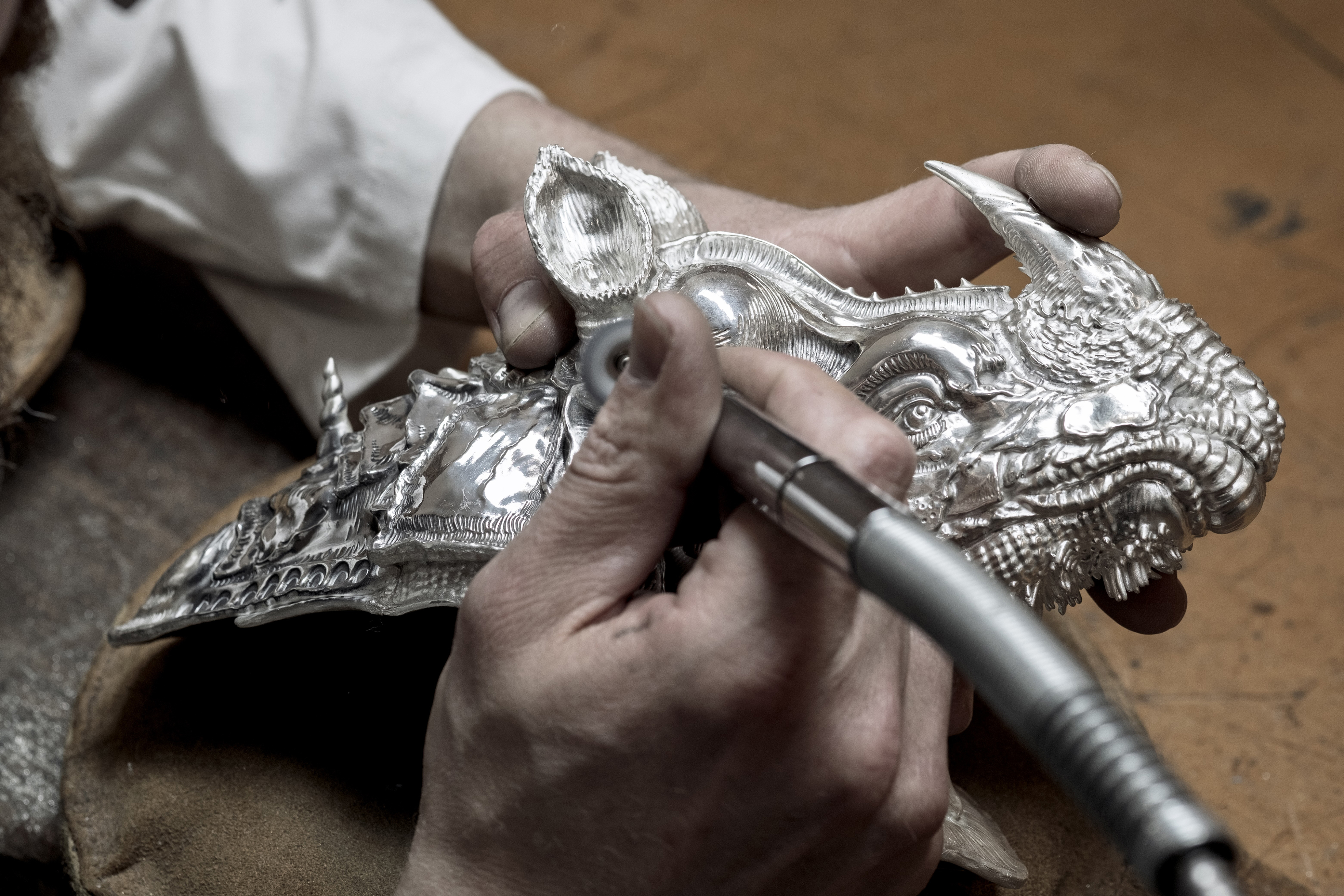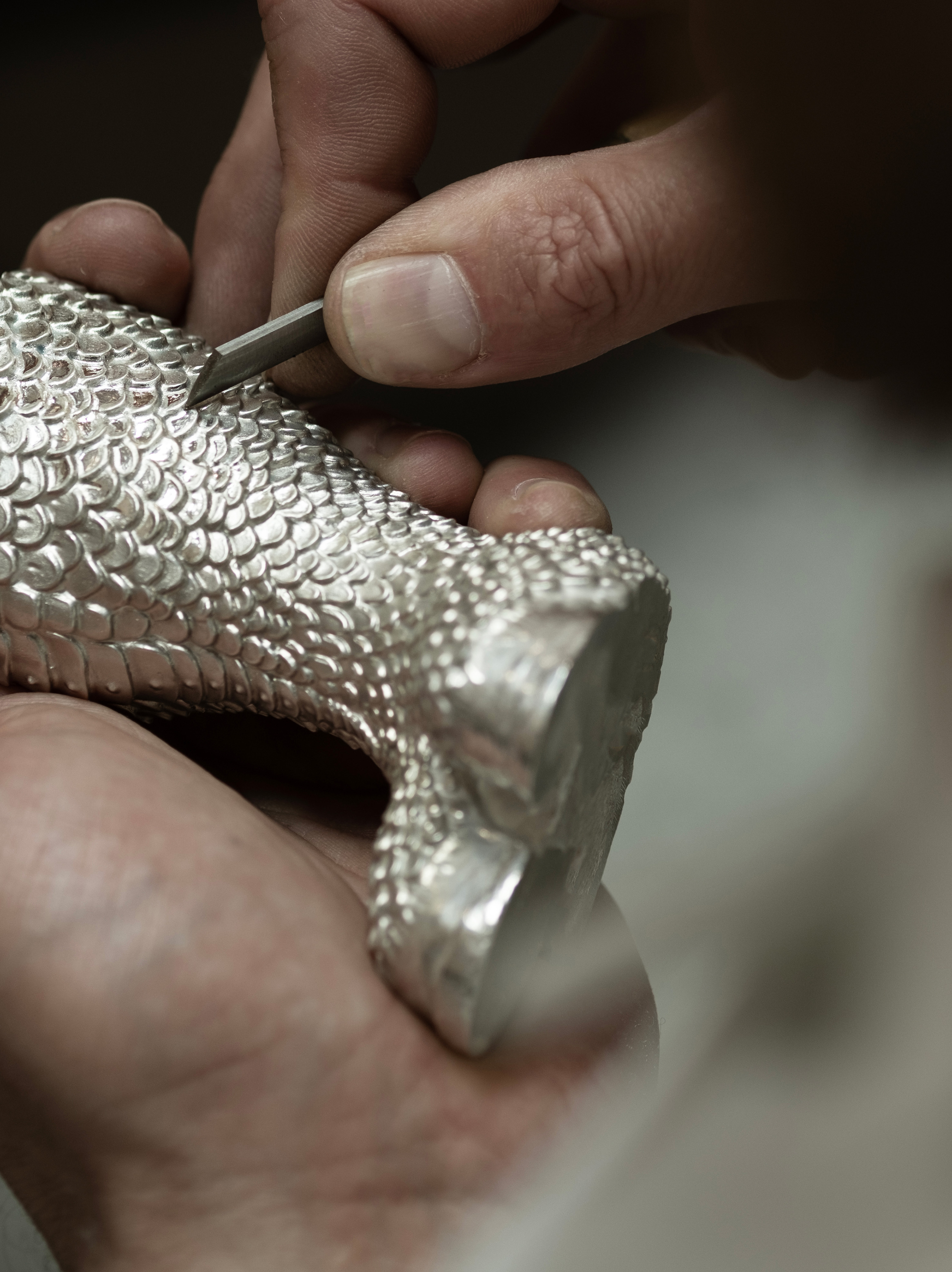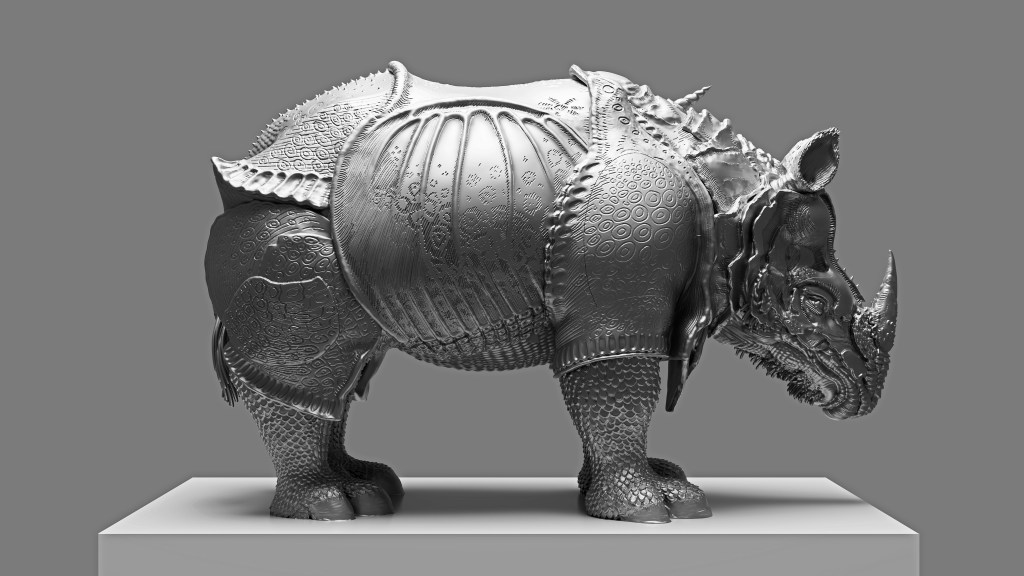The £100,000 Silver Rhino Inspired by Dürer
Renowned for their formidable horns and resilient hides, rhinos are often viewed as the armored giants of the animal kingdom. Adding a new dimension to this perception, a groundbreaking project by Asprey Studio in collaboration with the British Museum has brought Albrecht Dürer’s 1515 illustration of a rhinoceros into the realm of precious metals. Dürer, a pivotal figure of the Renaissance, is recognized for his exceptional talents as both a painter and printmaker.
This iconic woodcut image, which circulated widely across Europe, significantly influenced the contemporary understanding of rhinos at a time when very few had ever seen the creature. Interestingly, Dürer himself had never encountered a rhino. His depiction, which is somewhat inaccurate, portrays a fantastical armored version of the animal. Dürer conceptualized this image based on accounts of Ganda, the first rhinoceros seen in Europe since the days of ancient Rome. Ganda had been presented to King Manuel I of Portugal by Sultan Muzaffar Shah II of Gujarat, India. The arrival of this exotic animal in Lisbon created a substantial stir, with news of its existence spreading quickly across the continent, eventually reaching Dürer in Nuremberg through a merchant’s newsletter.

Asprey Studio, which was founded in 2021, operates as a digital and contemporary art gallery, design workshop, and members’ club. It delves into the fusion of traditional craftsmanship with state-of-the-art digital artistry. Rather than being confined to a physical location, events at Asprey Studio occur at various global venues, including its gallery in Mayfair. Members benefit from early access to events, exclusive previews, and the opportunity to display their art collections on a designated gallery wall. This initiative is a venture distinct from the illustrious 244-year-old British luxury jewellery house Asprey, known for its creations for figures such as Queen Victoria and Angelina Jolie. Asprey Studio thus continues the legacy of artisanal quality while exploring new avenues in art and design through innovative technological applications.
The reinterpretation of Dürer’s rhino serves as a notable example of this philosophy. Asprey Studio’s master silversmiths have taken Dürer’s famed two-dimensional drawing and brought it to life through a series of 11 three-dimensional silver sculptures. The creation process began with detailed consultations of Dürer’s original preparatory sketches housed in the British Museum. Dr. Olenka Horbatsch, the curator for Dutch, Flemish and German prints and drawings at the museum, remarked, “Dürer’s Rhinoceros is an iconic image that has sparked immense cultural interest for centuries, leading to numerous adaptations and interpretations.” Alastair Walker, the chief creative officer of Asprey Studio, echoed this, stating, “Dürer’s pioneering artistic genius is unparalleled, and with our addition, we aspire to inspire others as well.”


Each sculpture, measuring 40 centimeters in length, comprises 90 uniquely crafted pieces of silver utilizing various advanced techniques. Walker elaborated, “We have implemented digital sculpting to supplant traditional clay, enabling multiple sculptors to collaborate efficiently on the overall design during production.” The intricate assembly of each sculpture is quite unusual for silverware, necessitating a thoughtful approach to the methods employed. Each component is precision arc-welded and meticulously shaped using classic anticlastic raising methods, along with detailed hand engraving. The combination of digital advancements and long-established silversmithing skills is a hallmark of Asprey Studio, as Walker notes, “Our craftsmanship stems from years of tradition, honed by the expertise uniquely possessed by our silversmiths.”

The complexity of the design and production led to an extensive eight-month timeline for creating the first sculpture in the Asprey Studio workshop located in Kent, which has already been sold for £300,000. The insights gained during this production phase have streamlined subsequent creations; the time has now decreased to between three and six months for the remaining ten sculptures. Of these, only four are still available for purchase at a price of £100,000 each, as the other six have already been acquired by private collectors.
In a contrasting fate, the real-life Ganda, who inspired Dürer’s depiction, did not end well. After being prepared to battle an elephant—a spectacle which likely contributed to Dürer’s misinterpretation of the rhino’s appearance—Ganda was eventually sent as a gift to Pope Leo X in Rome. Tragically, the vessel sank during transit, resulting in Ganda’s drowning.
For inquiries about the sculptures, please contact [email protected]




Post Comment